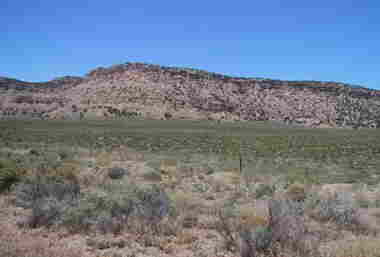US court ruling obstacle for ISL project
20 April 2009
A US court has upheld a ruling that the land involved in Uranium Resources Inc's (URI's) Churchrock, New Mexico uranium project is Navajo land, in a decision that could complicate plans for in-situ leach (ISL) extraction at the site.
 |
| URI's Churchrock project (Image: URI) |
The decision by the 10th Circuit Court of Appeals in Denver upholds a 2007 determination by the US Environmental Protection Agency (EPA) that certain land owned by URI subsidiary Hydro Resources Inc (HRI) in part of New Mexico known as the 'checkerboard' area is 'Indian country'. The land in question is uninhabited and lies about 11 miles from the city of Gallup and six miles from the Navajo town of Church Rock. It is near to but not actually part of the Navajo reservation.
The ruling means that HRI's proposed in-situ leach uranium mine is subject to regulation by the EPA under the Safe Drinking Water Act rather than the New Mexico Department of the Environment (NMED). HRI had brought its appeal because NMED had already approved its request for an underground injection control (UIC) permit, a necessary requirement for an in-situ operation where uranium is removed from host rock by injecting chemicals to dissolve it and pumping the solution to the surface for treatment. The court recognised that the need for HRI to repeat the permitting process with the EPA could be both costly and disruptive for the company but upheld EPA's position nonetheless.
HRI was licensed to mine the both the Crownpoint and Church Rock ISL deposits in New Mexico in 1994, and after years of opposition the licence was validated by the Nuclear Regulatory Commission in 2006. Earlier this year a subsidiary of Japanese trading company Itochu pulled out of a joint venture with HRI to develop Churchrock which according to URI hosts some 18.6 million pounds (7154 tU) of in-place mineralized uranium.
URI, which has resources and active uranium projects in Texas as well as its resources in New Mexico, announced in December 2008 that it would be scaling back its projects this year unless the uranium market improved.